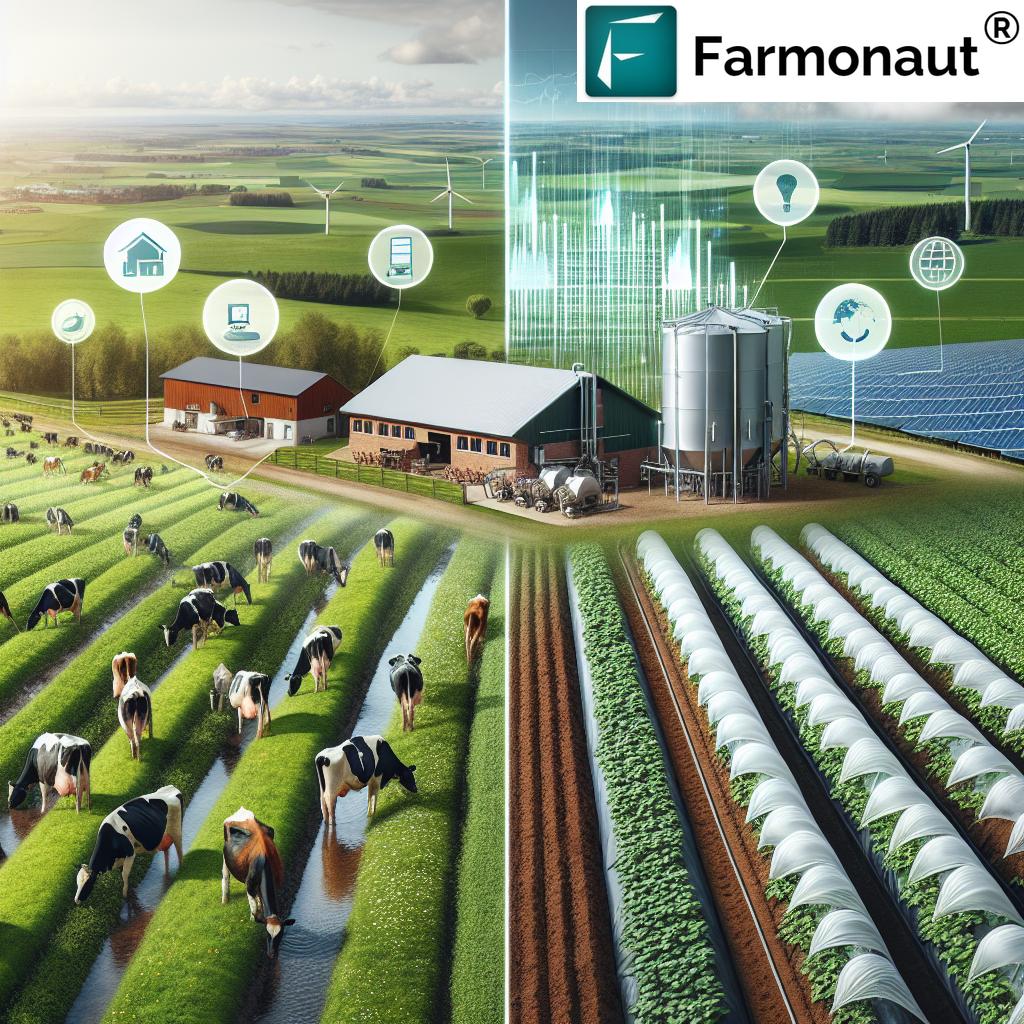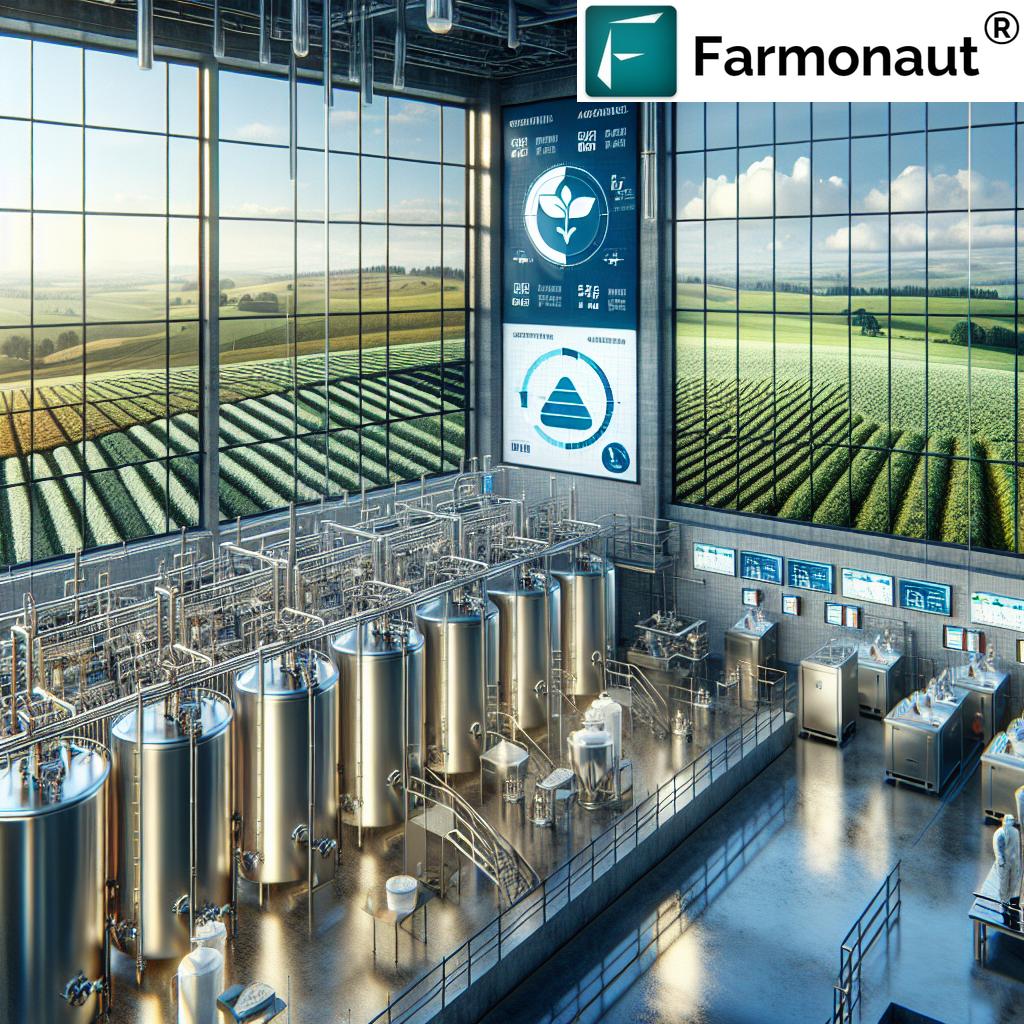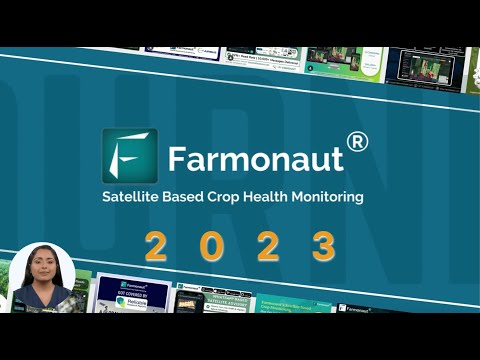Sustainable Canadian Dairy: How Farmers Are Revolutionizing Agriculture for a Net-Zero Future

“Canadian dairy farmers aim to achieve net-zero emissions by 2050, revolutionizing sustainable agriculture practices.”
Welcome to our comprehensive exploration of sustainable Canadian dairy farming and the revolutionary practices that are shaping the future of agriculture. In this blog post, we’ll delve into the innovative approaches Canadian dairy farmers are adopting to ensure food safety, animal welfare, and environmental stewardship. We’ll also examine how these practices are contributing to the ambitious goal of achieving net-zero emissions by 2050.
As we embark on this journey, we’ll discover how the dairy industry in Canada is not just producing high-quality milk, but also leading the charge in sustainable food production. From the implementation of regenerative agriculture techniques to cutting-edge water conservation methods, Canadian dairy farmers are at the forefront of agricultural innovation.
The Commitment to Sustainability in Canadian Dairy Farming
Canadian dairy farmers have long been committed to producing high-quality milk while prioritizing sustainability. This commitment is evident in the industry-wide adoption of the proAction® program, which ensures transparency and accountability from farm to table. Let’s explore the key aspects of this program and how it’s revolutionizing the dairy sector.
The proAction® Program: Ensuring Excellence in Dairy Farming
The proAction® program is a comprehensive initiative that covers six crucial areas of dairy farming:
- Milk Quality: Ensuring the highest standards for Canadian milk
- Food Safety: Implementing rigorous protocols to safeguard consumer health
- Animal Care: Prioritizing the well-being of dairy cows
- Livestock Traceability: Tracking the movement of dairy cattle for biosecurity
- Biosecurity: Preventing the introduction and spread of disease
- Environment: Implementing practices to reduce environmental impact
This program demonstrates the industry’s commitment to continuous improvement and transparency. By adhering to these standards, Canadian dairy farmers ensure that consumers can trust the quality and sustainability of their products.
The Blue Cow Logo: A Symbol of Quality and Sustainability
The “Blue Cow” logo has become a recognized symbol of Canadian milk quality and sustainable practices. When consumers see this logo, they can be confident that the product meets the high standards set by the proAction® program. This visual cue helps connect consumers with the realities of modern dairy farming and the efforts being made to ensure sustainability.
Revolutionizing Agriculture: The Path to Net-Zero Emissions
One of the most ambitious goals set by the Canadian dairy industry is to achieve net-zero emissions by 2050. This commitment reflects the sector’s dedication to combating climate change and ensuring a sustainable future for generations to come. Let’s explore some of the innovative practices being implemented to reach this target.
Embracing Regenerative Agriculture
Regenerative agriculture is at the heart of sustainable dairy farming in Canada. This approach focuses on improving soil health, enhancing biodiversity, and increasing carbon sequestration. Here are some key practices being adopted:
- Cover Cropping: Planting cover crops between main crop cycles to improve soil structure and prevent erosion
- Rotational Grazing: Implementing strategic grazing patterns to promote plant diversity and soil health
- Minimal Tillage: Reducing soil disturbance to maintain soil structure and microbial communities
- Composting: Utilizing farm waste to create nutrient-rich compost for soil amendment
These practices not only improve soil health but also contribute to carbon sequestration, helping to offset greenhouse gas emissions from dairy operations.
Water Conservation and Recycling Initiatives
Water is a precious resource, and Canadian dairy farmers are implementing innovative techniques to conserve and recycle water on their farms. Some of these initiatives include:
- Precision Irrigation: Using advanced technology to apply water only where and when it’s needed
- Rainwater Harvesting: Collecting and storing rainwater for use in farm operations
- Wastewater Recycling: Treating and reusing wastewater from dairy operations for irrigation or cleaning
- Drought-Resistant Crop Varieties: Planting crops that require less water without compromising nutritional value for cattle
These water conservation efforts not only reduce the environmental impact of dairy farming but also contribute to the overall sustainability of the industry.

Innovative Technologies Driving Sustainable Dairy Farming
Technology plays a crucial role in the transformation of Canadian dairy farming. From precision agriculture to advanced monitoring systems, farmers are leveraging cutting-edge tools to optimize their operations and reduce their environmental footprint.
Precision Agriculture and Farm Management
Precision agriculture techniques are revolutionizing how dairy farms operate. These technologies allow farmers to make data-driven decisions, optimizing resource use and improving overall efficiency. Some key technologies include:
- GPS-Guided Equipment: Ensuring precise application of inputs and reducing overlap
- Soil Sensors: Monitoring soil moisture and nutrient levels in real-time
- Drone Technology: Providing aerial imagery for crop health assessment and field mapping
- Farm Management Software: Integrating data from various sources for comprehensive farm management
One company at the forefront of this technological revolution is Farmonaut. Their advanced satellite-based farm management solutions are helping dairy farmers across Canada optimize their operations and move towards sustainable practices.
Farmonaut’s platform offers valuable services such as:
- Real-time crop health monitoring
- AI-based advisory systems
- Blockchain-based traceability
- Resource management tools
By leveraging these technologies, Canadian dairy farmers can make more informed decisions about their crops and livestock, leading to improved efficiency and reduced environmental impact.
Advanced Monitoring Systems for Animal Welfare
Ensuring the health and well-being of dairy cows is a top priority for Canadian farmers. Advanced monitoring systems are being implemented to track animal health, behavior, and productivity. These systems include:
- Wearable Devices: Tracking cow activity, rumination, and vital signs
- Automated Milking Systems: Allowing cows to be milked on their own schedule, reducing stress
- Feed Management Systems: Optimizing nutrition and reducing waste
- Climate Control Technology: Maintaining optimal barn conditions for cow comfort
These technologies not only improve animal welfare but also contribute to increased productivity and reduced environmental impact.
Research and Innovation Driving the Industry Forward
The Canadian dairy industry is committed to ongoing research and innovation to drive sustainable practices and improve efficiency. Collaboration between farmers, researchers, and technology providers is key to developing new solutions for the challenges facing the industry.
Key Areas of Research
Some of the primary areas of focus for research in the Canadian dairy industry include:
- Greenhouse Gas Reduction: Developing strategies to minimize methane emissions from dairy cows
- Feed Efficiency: Improving the nutritional value of feed while reducing waste
- Genetic Improvement: Breeding cows for improved health, longevity, and production efficiency
- Waste Management: Exploring new ways to recycle and repurpose farm waste
- Renewable Energy: Implementing solar, wind, and biogas technologies on dairy farms
These research initiatives are crucial for achieving the industry’s sustainability goals and ensuring the long-term viability of Canadian dairy farming.
“The proAction® program ensures transparency in Canadian dairy farming, covering six key areas from food safety to environmental stewardship.”
Collaboration with Technology Providers
The dairy industry is increasingly partnering with technology providers to develop and implement innovative solutions. Companies like Farmonaut play a crucial role in this ecosystem by providing advanced tools for farm management and sustainability.
Farmonaut’s satellite-based crop health monitoring and AI-driven advisory systems are particularly valuable for dairy farmers who grow their own feed crops. These tools enable farmers to:
- Optimize irrigation and fertilizer use
- Detect and address crop health issues early
- Improve overall farm productivity
- Reduce resource waste and environmental impact
By leveraging these technologies, Canadian dairy farmers can make data-driven decisions that contribute to their sustainability goals while maintaining high levels of productivity.
Connecting Consumers with Modern Dairy Farming
As consumers become increasingly interested in the origin and production methods of their food, the Canadian dairy industry is taking steps to increase transparency and education. Let’s explore some of the initiatives being implemented to connect consumers with the realities of modern dairy farming.
Virtual Farm Tours and Educational Programs
Many Canadian dairy farms are now offering virtual tours, allowing consumers to experience farm life from the comfort of their homes. These tours provide insights into:
- Daily farm operations
- Animal care practices
- Sustainability initiatives
- Milk production and processing
Additionally, educational programs aimed at schools and community groups help to foster a better understanding of modern dairy farming and its role in sustainable food production.
Transparency in Supply Chain
The Canadian dairy industry is leveraging technology to increase transparency in the supply chain. Blockchain-based traceability solutions, like those offered by Farmonaut, allow consumers to track the journey of their dairy products from farm to table. This level of transparency builds trust and helps consumers make informed choices about the products they purchase.
The Future of Sustainable Canadian Dairy
As we look to the future, the Canadian dairy industry is poised to continue its journey towards sustainability and innovation. The commitment to achieving net-zero emissions by 2050 is driving ongoing research and the adoption of new technologies. Here are some areas where we can expect to see continued progress:
- Carbon Sequestration: Developing new methods to capture and store carbon on dairy farms
- Renewable Energy Integration: Increasing the use of solar, wind, and biogas energy on farms
- Circular Economy Practices: Finding new ways to reuse and recycle farm waste
- Advanced Nutrition: Developing feed additives to reduce methane emissions from cows
- Precision Fermentation: Exploring new technologies for producing dairy proteins
These advancements will not only contribute to environmental sustainability but also ensure the economic viability of Canadian dairy farms for generations to come.
Sustainable Canadian Dairy Practices Comparison
| Farming Aspect | Traditional Practice | Sustainable Practice | Environmental Impact | Estimated Resource Savings |
|---|---|---|---|---|
| Soil Management | Intensive tillage | Minimal tillage, cover cropping | Improved soil health, increased carbon sequestration | 30-50% reduction in soil erosion |
| Water Usage | Flood irrigation | Precision irrigation, rainwater harvesting | Reduced water waste, improved water quality | Up to 40% reduction in water use |
| Waste Recycling | Limited waste management | Composting, anaerobic digestion | Reduced landfill waste, production of renewable energy | 50-70% reduction in farm waste |
| Energy Efficiency | Conventional energy sources | Solar panels, LED lighting, energy-efficient equipment | Reduced greenhouse gas emissions | 20-30% reduction in energy consumption |
| Animal Welfare | Basic housing and care | Advanced monitoring systems, improved barn design | Improved animal health and longevity | 15-25% increase in cow productivity |
| Emissions Reduction | Limited emission control | Feed additives, manure management, carbon offsetting | Significant reduction in greenhouse gas emissions | 20-30% reduction in overall farm emissions |
The Role of Technology in Sustainable Dairy Farming
As we’ve seen throughout this blog post, technology plays a crucial role in the sustainable transformation of Canadian dairy farming. Companies like Farmonaut are at the forefront of this technological revolution, providing farmers with the tools they need to optimize their operations and reduce their environmental impact.
Farmonaut’s satellite-based farm management solutions offer a range of benefits for dairy farmers:
- Real-time Crop Monitoring: Farmers can track the health of their feed crops, ensuring optimal nutrition for their cows while minimizing resource use.
- AI-driven Advisory: The Jeevn AI system provides personalized recommendations for crop management, helping farmers make informed decisions that improve efficiency and sustainability.
- Resource Management: Tools for fleet and resource management help reduce operational costs and minimize waste.
- Carbon Footprint Tracking: Farmers can monitor their emissions in real-time, allowing them to take targeted actions to reduce their environmental impact.
By leveraging these technologies, Canadian dairy farmers can make significant strides towards their sustainability goals while maintaining high levels of productivity.
Explore Farmonaut’s API for advanced satellite and weather data integration
Conclusion: A Sustainable Future for Canadian Dairy
As we’ve explored in this blog post, Canadian dairy farmers are at the forefront of revolutionizing agriculture for a sustainable future. Through their commitment to innovation, adoption of regenerative practices, and leveraging of cutting-edge technologies, they are paving the way for a net-zero emissions future in the dairy industry.
The proAction® program, combined with initiatives like the Blue Cow logo, ensures that consumers can trust in the quality and sustainability of Canadian dairy products. As the industry continues to evolve, we can expect to see even more exciting developments in sustainable farming practices, further solidifying Canada’s position as a leader in responsible dairy production.
By supporting Canadian dairy, consumers are not just choosing high-quality milk and dairy products; they’re also supporting a vision for a more sustainable food production system. As we move towards 2050 and beyond, the innovations and commitments made by Canadian dairy farmers today will help shape a greener, more sustainable future for generations to come.
FAQ: Sustainable Canadian Dairy Farming
- Q: What is the proAction® program?
A: The proAction® program is a comprehensive initiative in Canadian dairy farming that covers six key areas: milk quality, food safety, animal care, livestock traceability, biosecurity, and environmental stewardship. It ensures transparency and high standards in dairy production. - Q: How are Canadian dairy farmers working towards net-zero emissions?
A: Canadian dairy farmers are implementing various strategies including regenerative agriculture practices, water conservation techniques, renewable energy adoption, and the use of advanced technologies for precision farming and emissions reduction. - Q: What role does technology play in sustainable dairy farming?
A: Technology plays a crucial role through precision agriculture tools, advanced monitoring systems for animal welfare, and farm management software. Companies like Farmonaut provide satellite-based solutions for crop monitoring and resource management, contributing to more sustainable farming practices. - Q: How does regenerative agriculture benefit dairy farming?
A: Regenerative agriculture practices such as cover cropping, rotational grazing, and minimal tillage improve soil health, enhance biodiversity, and increase carbon sequestration. This leads to more sustainable feed production for dairy cows and reduces the overall environmental impact of dairy farming. - Q: What is the significance of the Blue Cow logo?
A: The Blue Cow logo is a symbol of quality and sustainability in Canadian dairy products. It indicates that the product meets the high standards set by the proAction® program, helping consumers identify sustainably produced Canadian dairy products.






